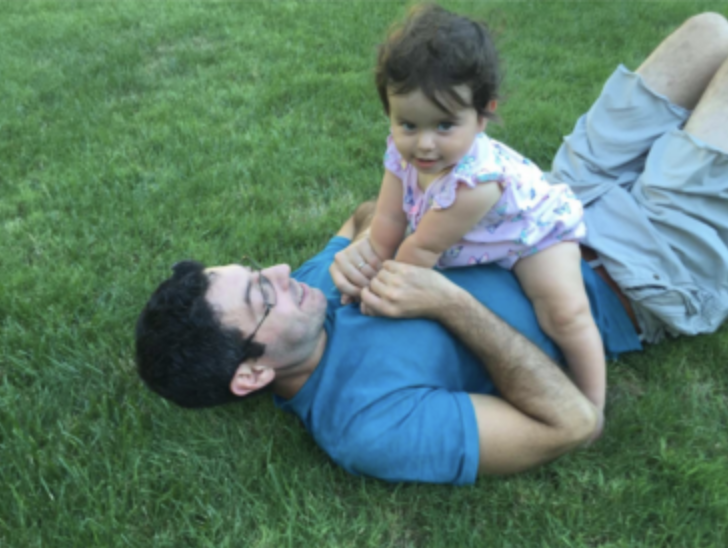Baseline
A parent often can sense when there has been a shift in their child’s overall health. These shifts can sometimes be significant or the result of an acute event, making them easier to notice. Other times the changes creep in slowly, building until the change is notable. When the change seems to be constant, or permanent, it is known in the medical field as a shift in baseline—a new “normal”. Understanding and tracking your child’s baseline can help you have some sense of what is happening and help you communicate your concerns and worries with your child’s medical team.

Your Team:
A medical professional who practices general medicine.
A specialist whose aim is to improve the quality of life of their patients over the course of their illness regardless of stage, by relieving pain and other symptoms of that illness.
An interdisciplinary specialist who helps manage the medical, social and emotional challenges of complex and/or long-term care.
A mental health professional who uses therapy and other strategies to support coping and adjustment and treat concerns regarding social, emotional, or behavioral functioning.
A trained professional who works with people, groups and communities to help them better their lives.
A member of the clergy who is responsible for the religious needs of an organization and/or its constituents.
Specialized care for people whose prognosis is measured in months instead of years, and the desire is to focus on comfort.
Your child’s primary physician can help you track and understand changes in your child’s health. Palliative care and complex care clinicians can also support you in this, and in identifying the decisions you may need to make. A psychologist, social worker or chaplain can provide space for talking through your feelings about changes in baseline. Palliative and hospice care can help you revisit your goals as your child declines. These clinicians can also support you in completing any documents needed to express and convey your choices.
With children (or adults) living with illness, the baseline shifts. Often it shifts over time, like steps. While the ups and downs continue, over time the ups are not as high as they once were, and the downs are usually lower. Each lower step represents a lower level of functioning.
You know your child best and will likely notice certain changes before clinicians do. These changes may bring about new, or more intense, feelings of anticipatory grief. Identifying and talking about the changes can make everything more real—and, sometimes, painful, even scary. But being able to describe the changes you see makes you an important member of the care team. As you share your knowledge and the clinicians share their assessments with you, you can find ways to adjust and even anticipate more change to come.
“It is the reference point: something to try to improve upon, at times. Something to regain, at others. Something that can slip away despite the best efforts, bringing with it soul-searching and the need for difficult decisions about what will come next.“
– Rick G., clinician
Tracking Baseline
Your medical team may ask you to keep a record of your impressions of your child’s conditions over time. Whether or not you are asked to do this, it can be helpful to journal about your child’s journey, with notes about what you see. You might periodically pause and take a step back to ask yourself what, if anything, has changed. It can be helpful to do this work with your child’s medical team—or to answer the questions individually, and then compare notes.
Some questions* to consider:
- How does my child’s health compare this month to six months ago and one year ago?
- After an illness, does my child return to the same baseline?
- For what portion of each day, on average, is my child comfortable and happy?
- How does that compare to 12 months ago?
- What percent of each day, on average, is my child uncomfortable or unhappy, and how does that compare to 12 months ago?
- How often has my child been sick in the past 6 months and how does that compare to 12 months ago and two years ago?
- How does my child appear in photos or videos from a year ago?
- Is my child sleeping more?
- Is my child able to participate in the activities that they enjoy?
- Has my family and household recently made many adjustments to accommodate my child’s changing needs?
*Source: Julie Hauer, MD, Pediatric Medical Director, Seven Hills Foundation, Worcester, MA
Baseline and Goals of Care
The CPN guide “Understanding Baseline” describes some of the possible considerations in detail.
Related Resources
-
 This is How We Live: This Thing Called Baselinevideo
This is How We Live: This Thing Called Baselinevideo -
 A Physical Therapist’s Perspective on Shifting BaselineBLOG
A Physical Therapist’s Perspective on Shifting BaselineBLOG -
 Understanding Baselineguide
Understanding Baselineguide -
 A mom on deciding this time NOT to treat. “When its disease progression, forward doesn’t look the same.”video
A mom on deciding this time NOT to treat. “When its disease progression, forward doesn’t look the same.”video -
 Your Child’s Baseline and Time Under TensionBLOG
Your Child’s Baseline and Time Under TensionBLOG -
 The notion of REVERSIBILITY to inform decision-making; and asking “Has it gotten harder for this child to live in their body?”video
The notion of REVERSIBILITY to inform decision-making; and asking “Has it gotten harder for this child to live in their body?”video